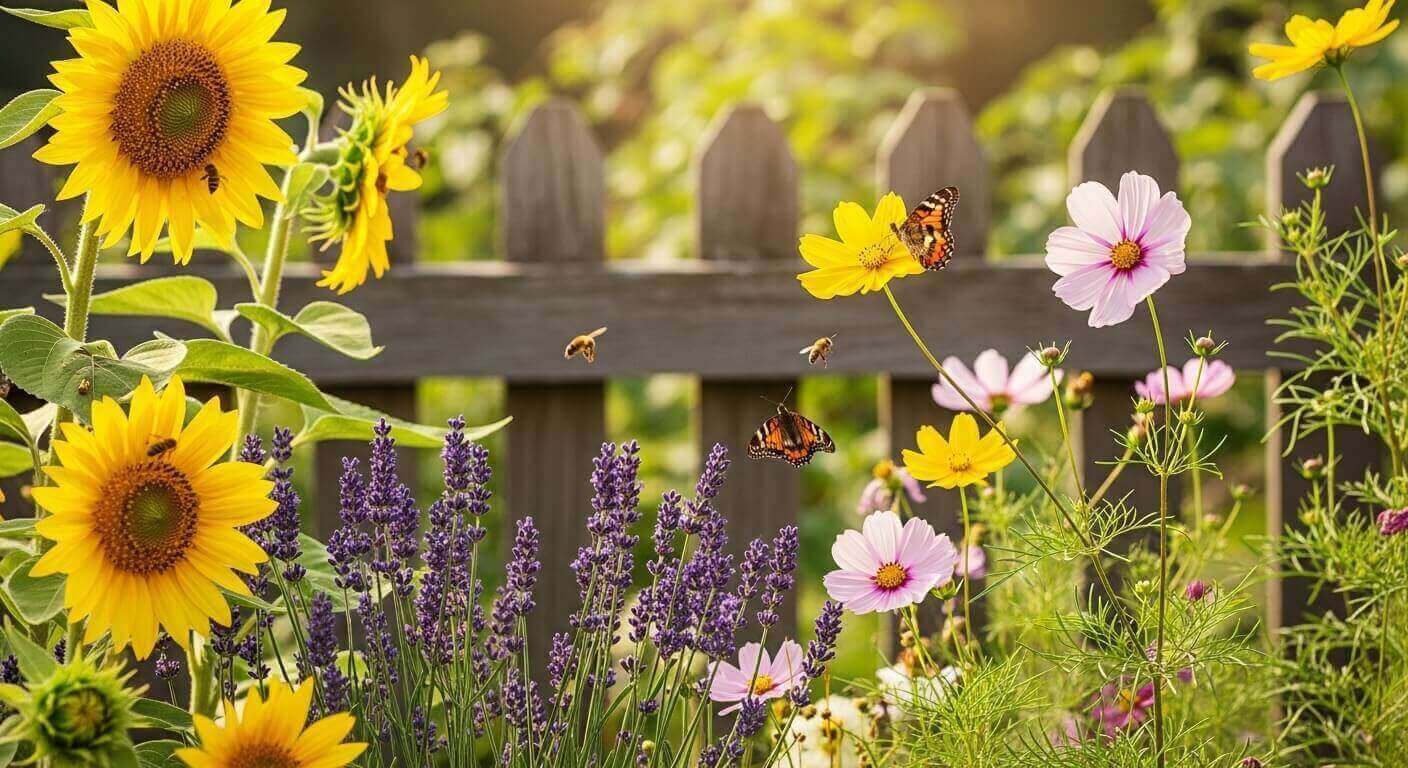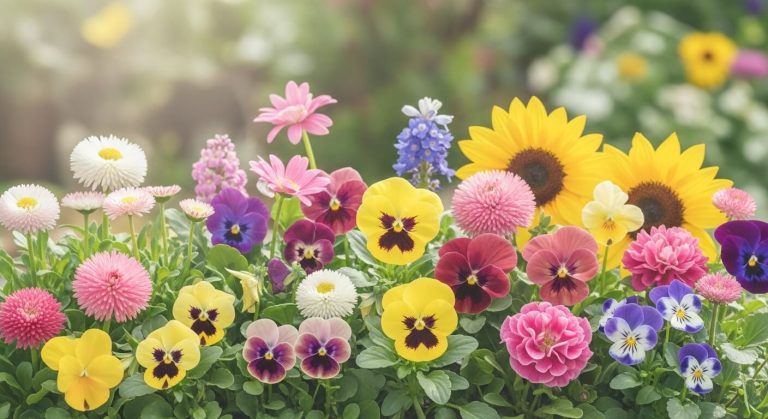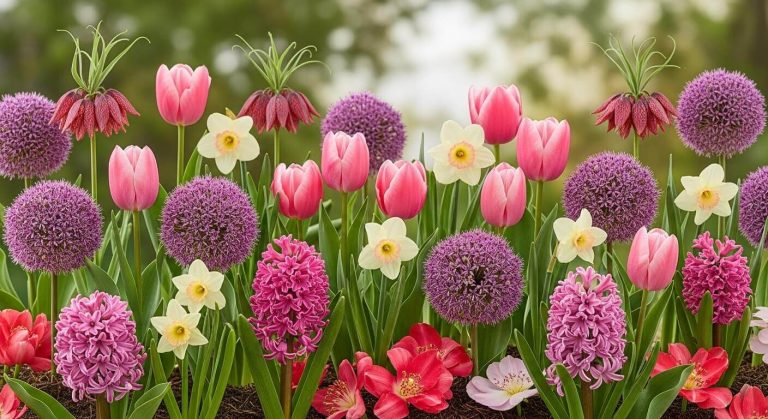Garden Flowers That Attract Bees and Pollinators
Introduction: Let Your Garden Bloom and Buzz
Ever looked at your backyard and thought, “How do I make this place come alive?” You’re not alone. If you’re searching for garden flowers that attract bees and pollinators, you’re on the right path to building a vibrant, eco-friendly haven. This guide is your ultimate buddy to planting flowers that attract bees, support pollinators, and give your garden that next-level charm.
Let’s roll up our sleeves, dig in, and create a colorful, buzzing sanctuary!
Why Bees and Pollinators Deserve a VIP Pass to Your Garden
Pollinators, especially bees, are the silent superheroes of our environment. They’re the reason our flowers bloom, fruits grow, and ecosystems stay balanced. But here’s the twist—bee populations are declining. Yep, it’s as serious as forgetting your watering can in summer!
Why Should You Care?
- Bees pollinate 75% of flowering plants.
- They boost your garden’s yield and beauty.
- A healthy bee habitat = a healthy planet.
Think of them as your tiny garden employees—unpaid, hardworking, and totally indispensable!
Want to do your part? It starts with growing the right gardening flowers.
“To plant a garden is to believe in tomorrow.” – Audrey Hepburn
Let’s find the best plants that make your garden a safe home for buzzing buddies.
1. Lavender – The Relaxation Queen (and Bee Favorite)
Bees love lavender like gardeners love coffee. This aromatic, purple beauty is a major pollinator magnet.
Why It Works:
- Bloom Time: Summer
- Sunlight: Full sun
- Height: 2–3 feet
- Water Needs: Low
Bonus: Lavender’s scent isn’t just for bees—it’s a natural stress reliever for us humans, too. Plus, it keeps mosquitoes away. Double win!
👉 Grab organic lavender seeds on Amazon here.
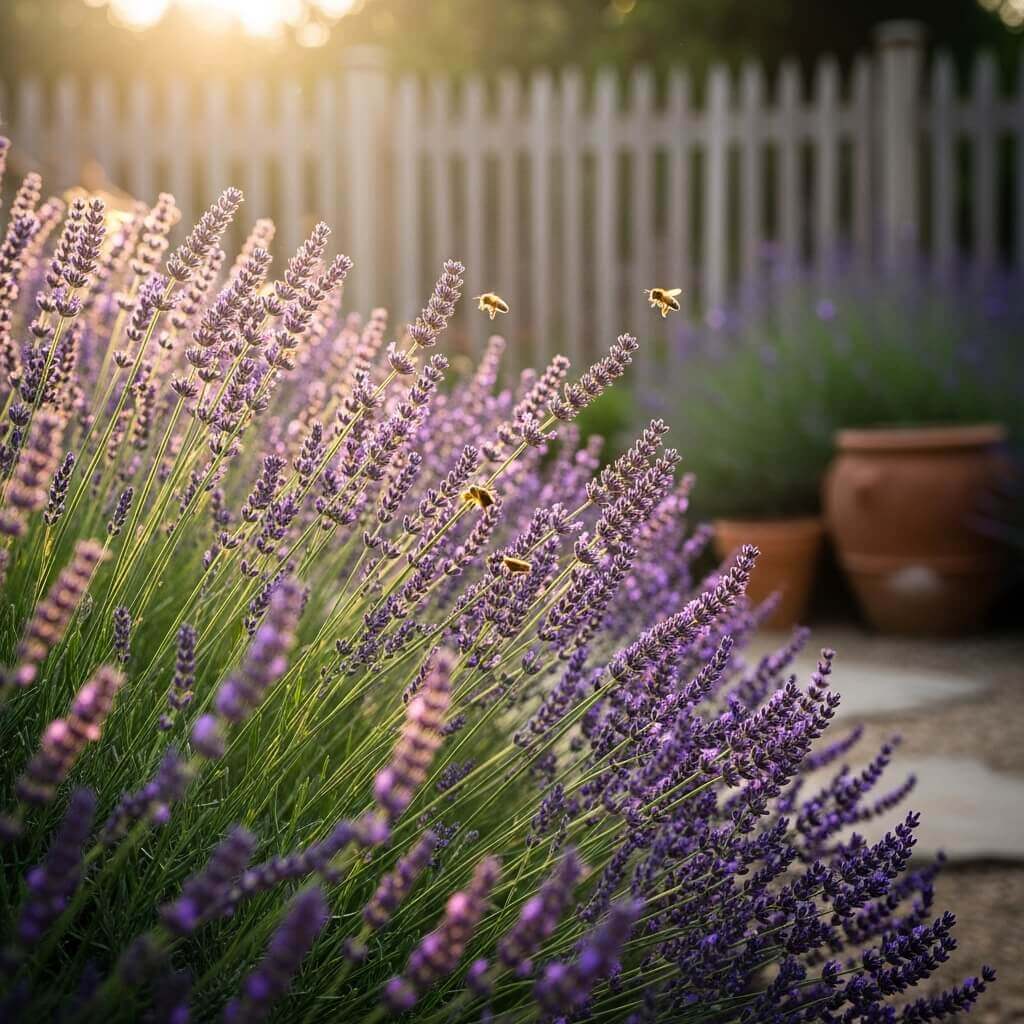
2. Coneflowers (Echinacea) – The Garden’s Punk Rockers
These spiky-headed rebels are not just drought-tolerant—they’re pollinator magnets!
Quick Facts:
- Bloom Time: Mid-summer to fall
- Maintenance: Low
- Attracts: Bees, butterflies, and birds
Their bright pink and purple petals are practically waving at the bees saying, “Hey, the party’s over here!”
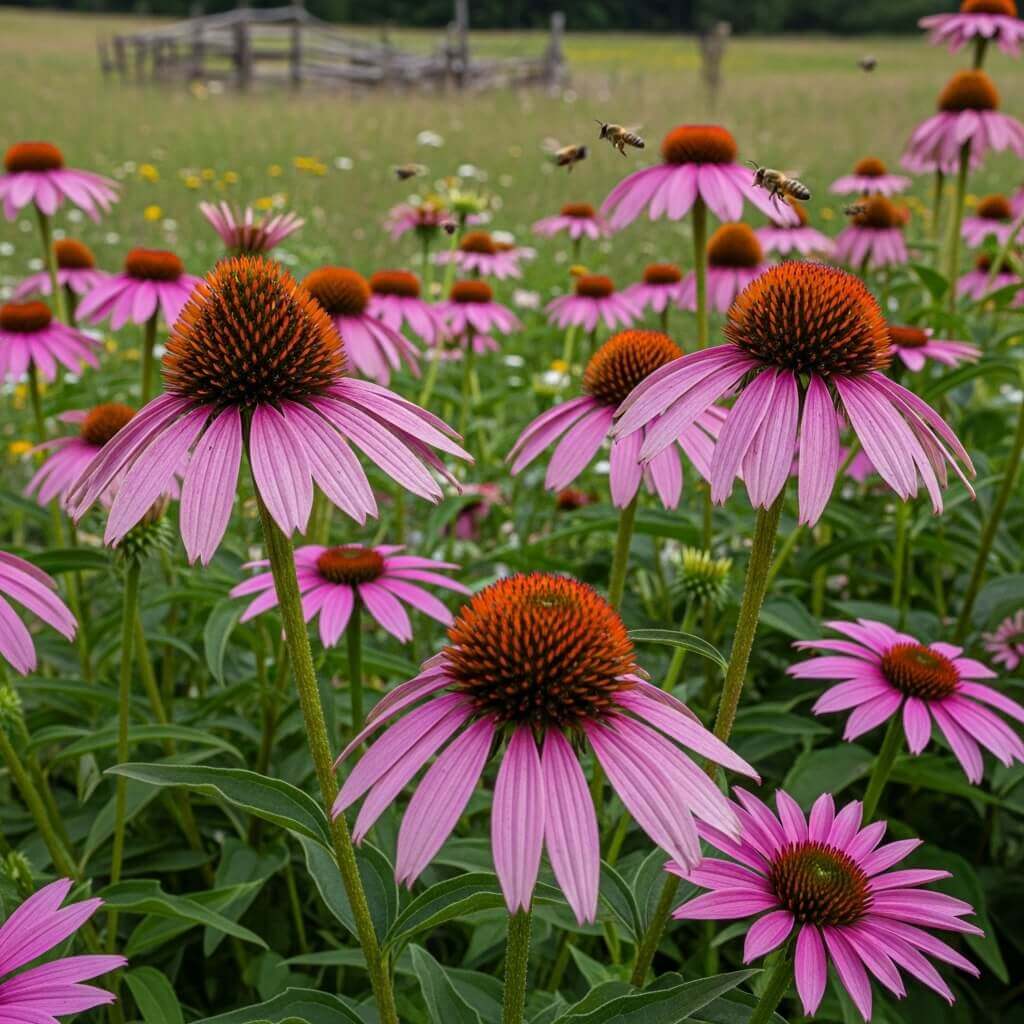
3. Bee Balm – The Obvious Choice
If the name didn’t give it away, bee balm is the real MVP for attracting pollinators.
Features:
- Bloom Time: Mid-summer
- Colors: Red, pink, purple
- Fragrance: Strong and minty
Besides making bees happy, it’s also edible and great for herbal teas.
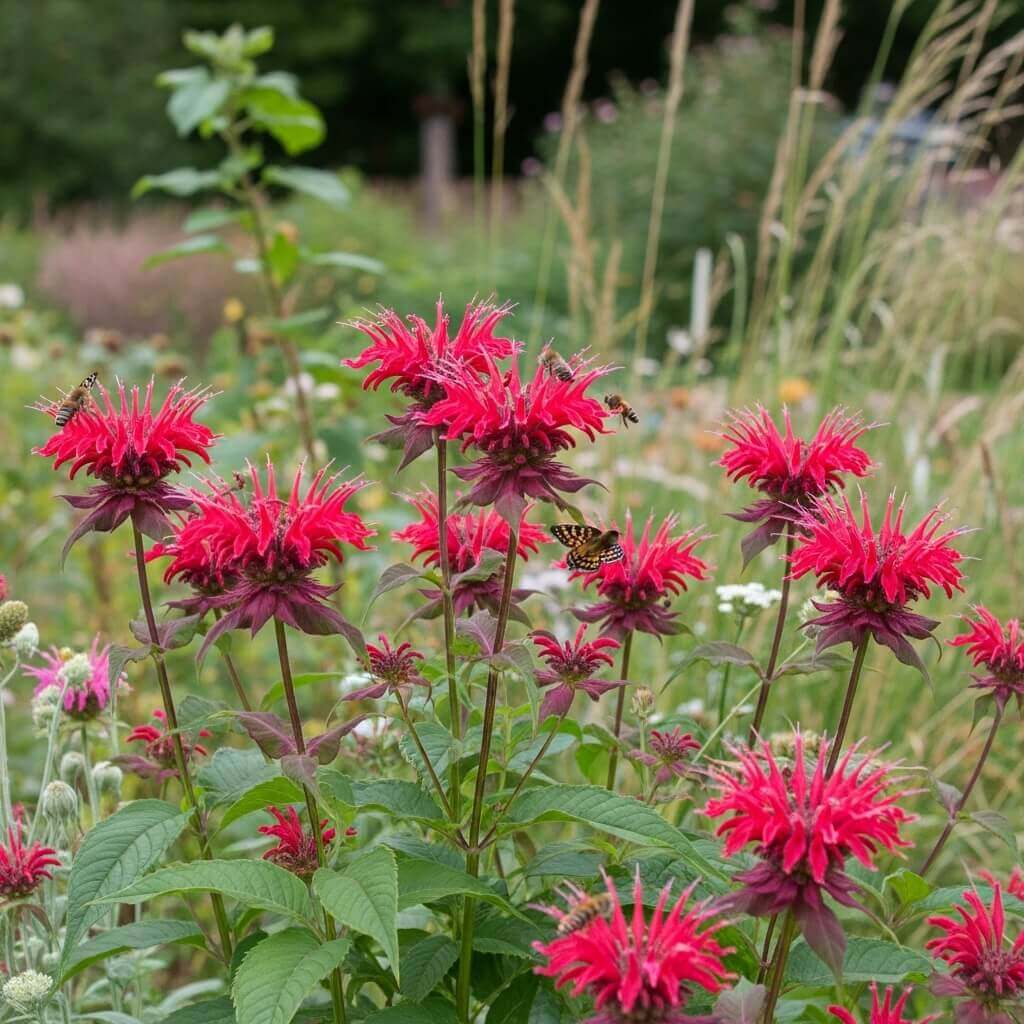
4. Sunflowers – Nature’s Beacon for Bees
Why Bees Love ‘Em:
- Massive pollen heads
- Late-summer blooming
- Perfect landing pads
And the best part? They’re incredibly easy to grow.
🌻 Start your sunflower journey with these sunflower seed packs on Amazon.
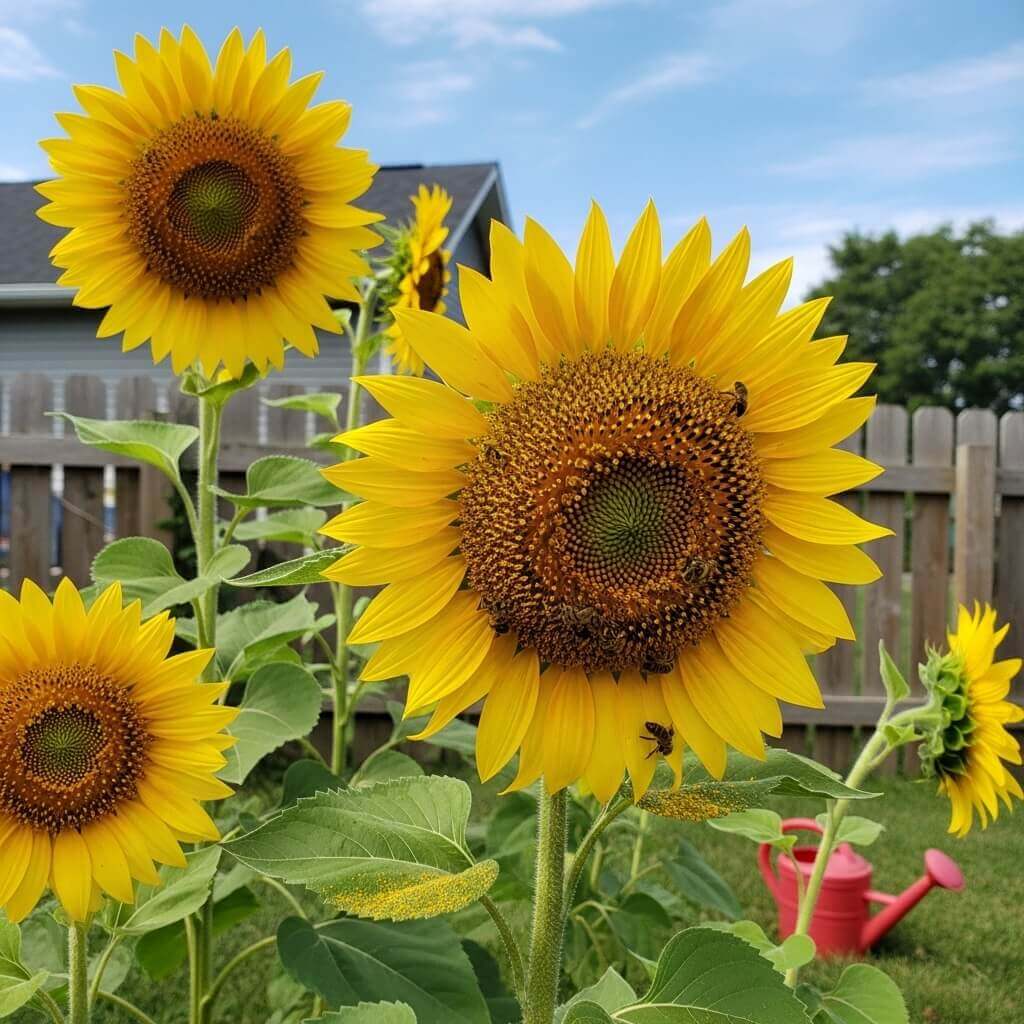
5. Black-Eyed Susan – The Summer Classic
They might sound like a country song title, but these golden beauties are summer royalty.
Plant Details:
- Bloom Time: Summer to fall
- Soil: Well-drained
- Pollinators Attracted: Bees, hoverflies
Their daisy-like appearance and long bloom period make them a must-have.
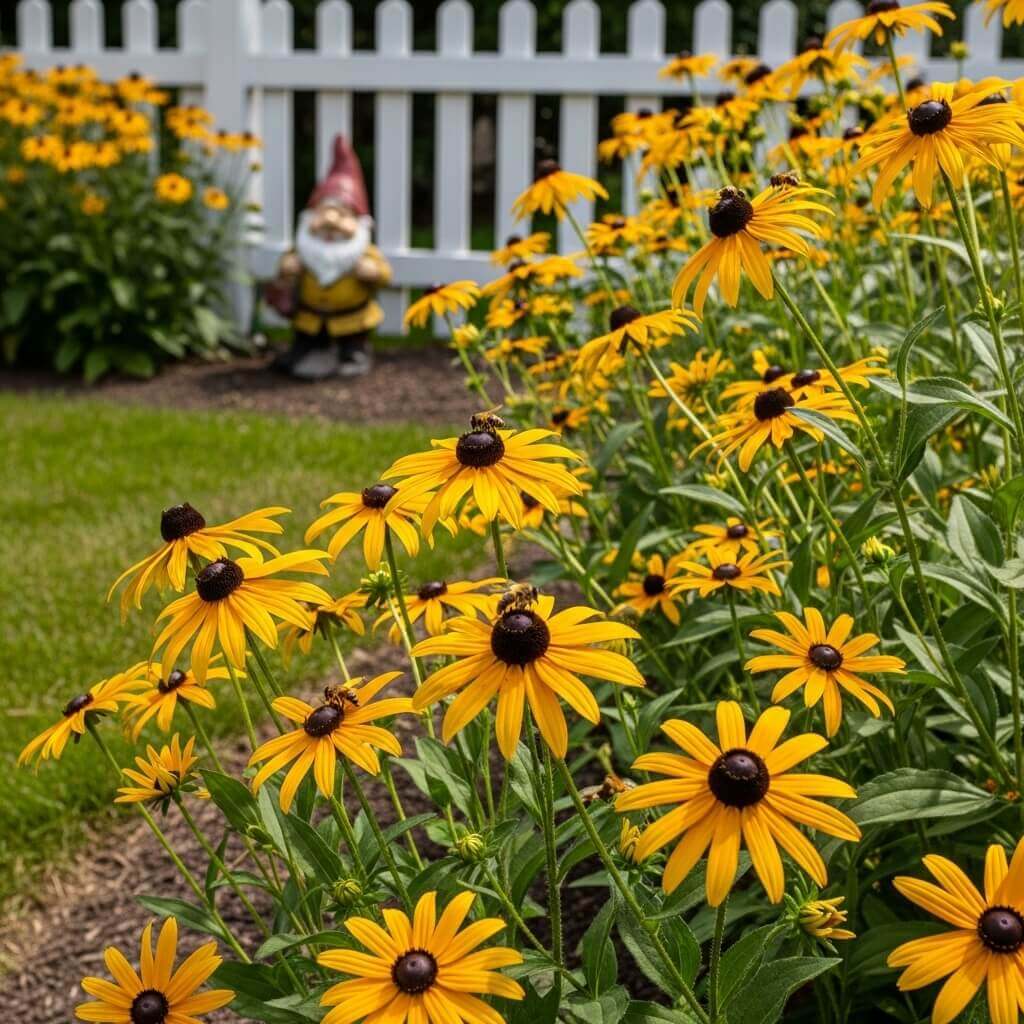
6. Zinnias – Colorful Candy for Bees
Want to create a color explosion in your garden? Go for zinnias.
What Makes Them Special:
- Bloom Time: Late spring to frost
- Sunlight: Full sun
- Maintenance: Easy-peasy
Zinnias are fast growers and come in all the colors of a Skittles packet.
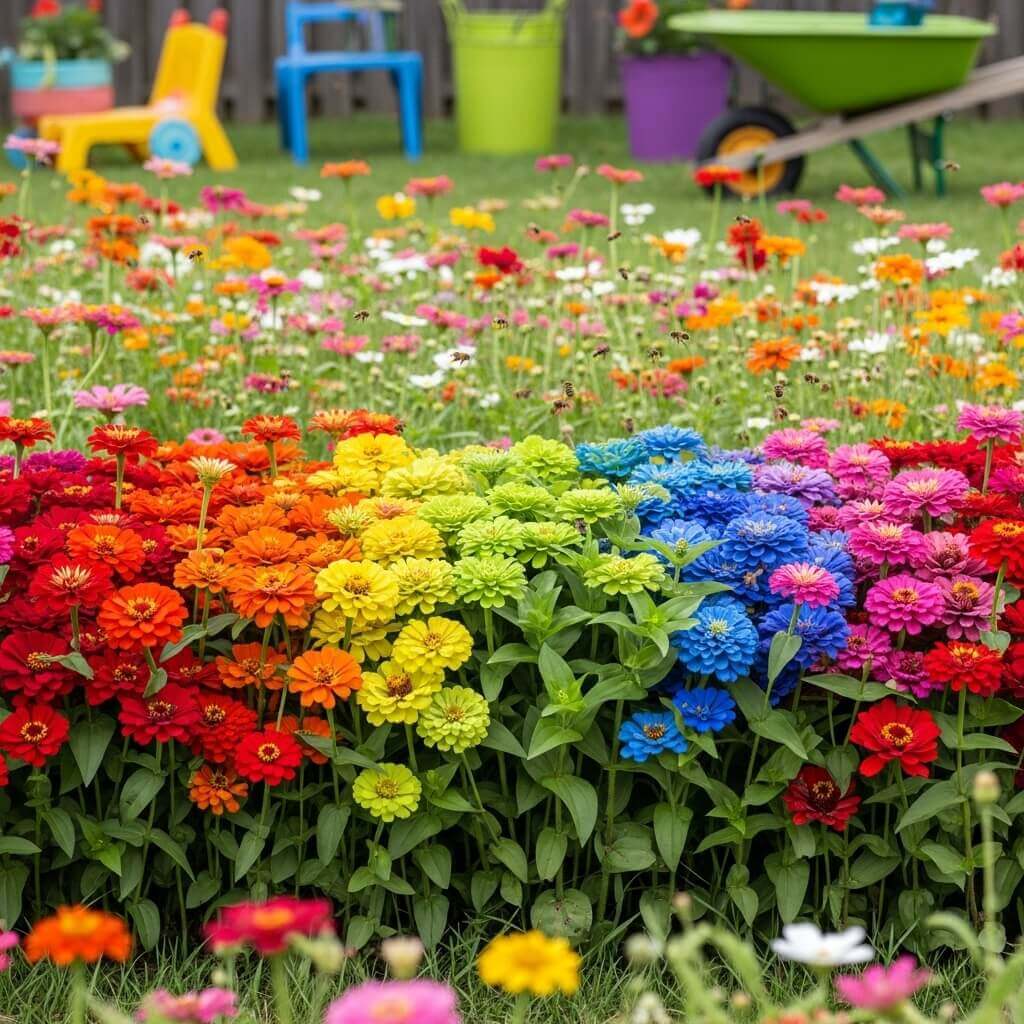
7. Goldenrod – The Late-Season Savior
When most flowers fade, goldenrod steps up to feed the late-season bees.
Why It’s a Hero:
- Bloom Time: Late summer
- Supports: Fall pollinators
- Myth Buster: Doesn’t cause allergies—ragweed does!
Help bees stock up before winter.
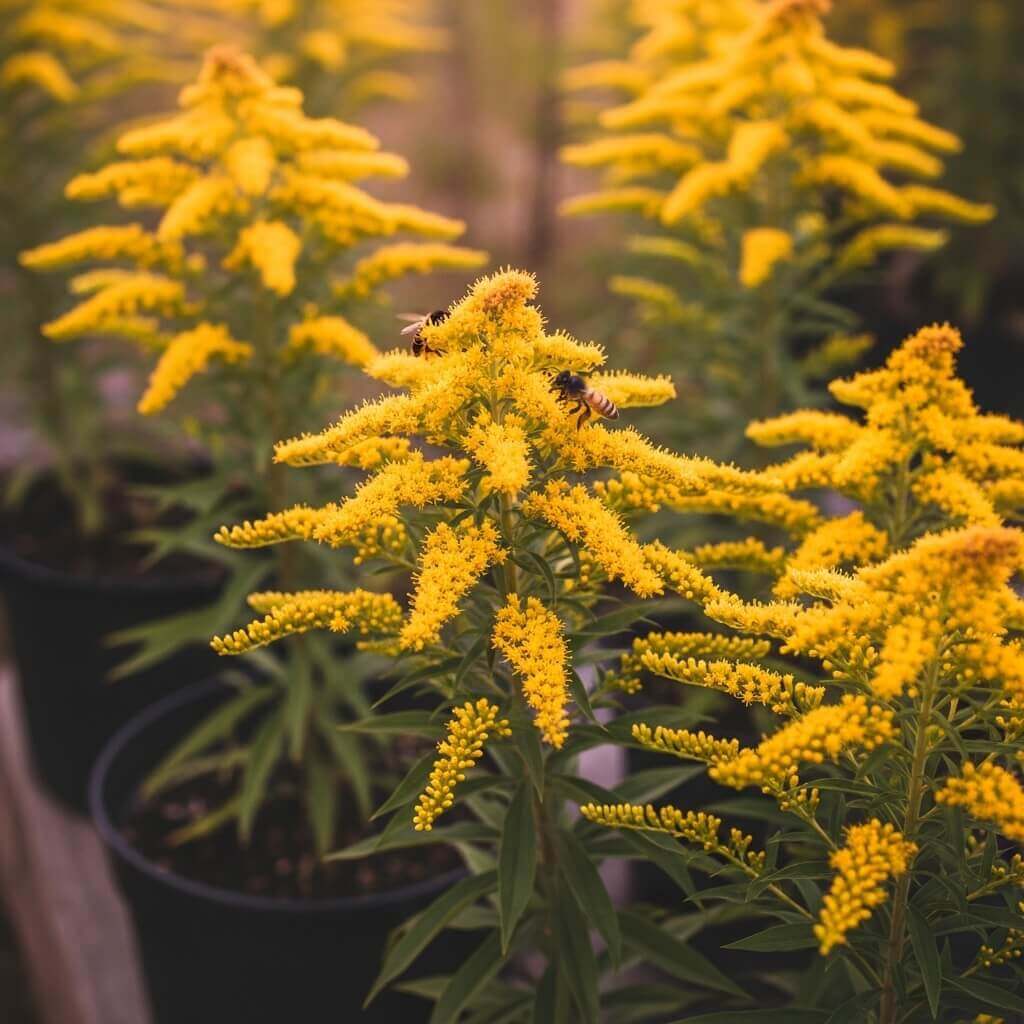
8. Cosmos – Airy and Elegant
These dainty, wildflower-style blooms are like a bee buffet.
Quick Highlights:
- Sun: Full
- Bloom: Early summer through fall
- Bonus: Self-seeding
Their open flower shape makes nectar access a breeze.
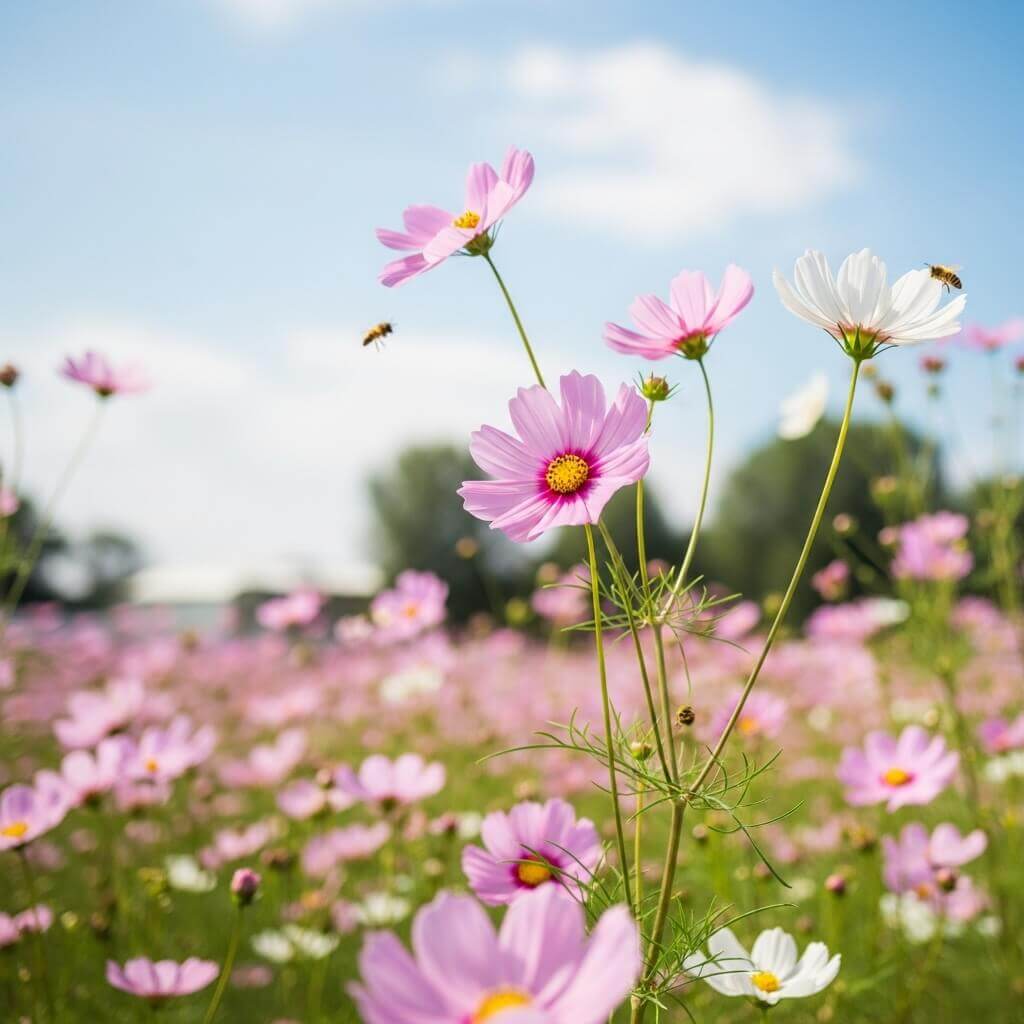
9. Borage – The Edible Wonder
It’s not just good for bees—it’s great in your salad too.
Buzz-Worthy Details:
- Flower Color: Bright blue
- Attracts: Bees, especially bumblebees
- Maintenance: Low
It’s a triple threat: pretty, useful, and pollinator-friendly.
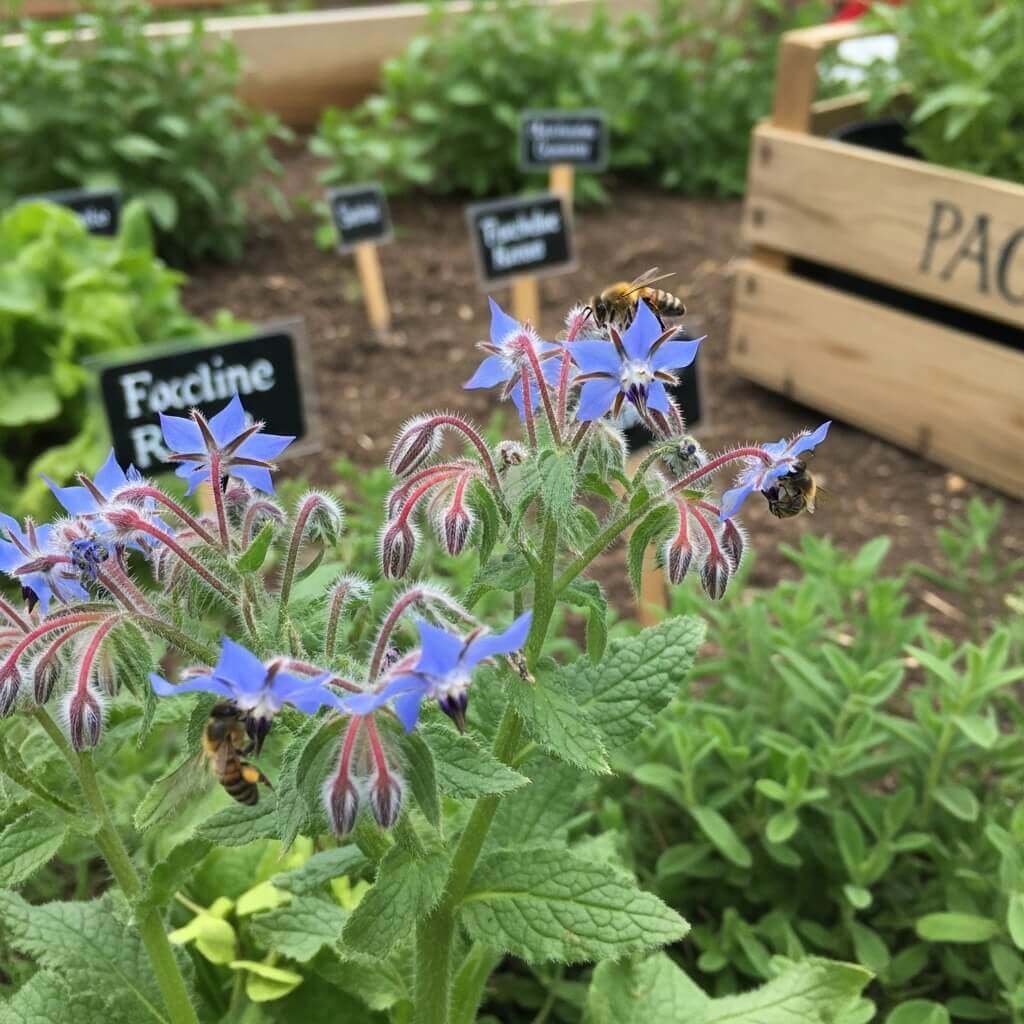
10. Catmint – Not Just for Cats
Bees go crazy for it too—thankfully, without rolling on the ground!
Key Info:
- Type: Perennial
- Bloom Time: Spring to fall
- Spacing: 12–18 inches
Its silvery foliage and purple blooms offer nonstop garden charm.
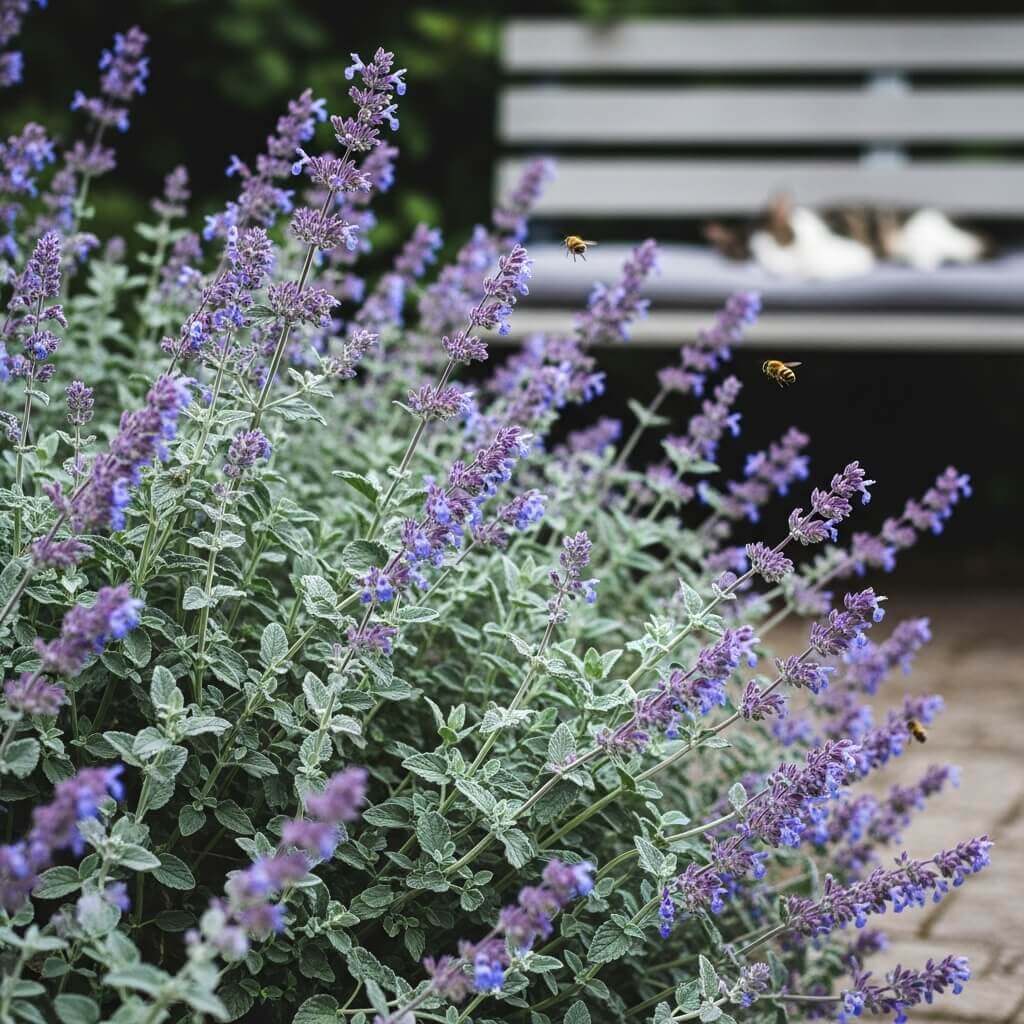
11. Yarrow – Tough But Charming
Think of yarrow as the multitasker in your garden. Strong, drought-resistant, and loved by pollinators.
Features:
- Colors: Yellow, pink, white
- Bloom Period: Summer
- Bonus: Great cut flower
Also used in herbal remedies, yarrow is your garden’s quiet overachiever.
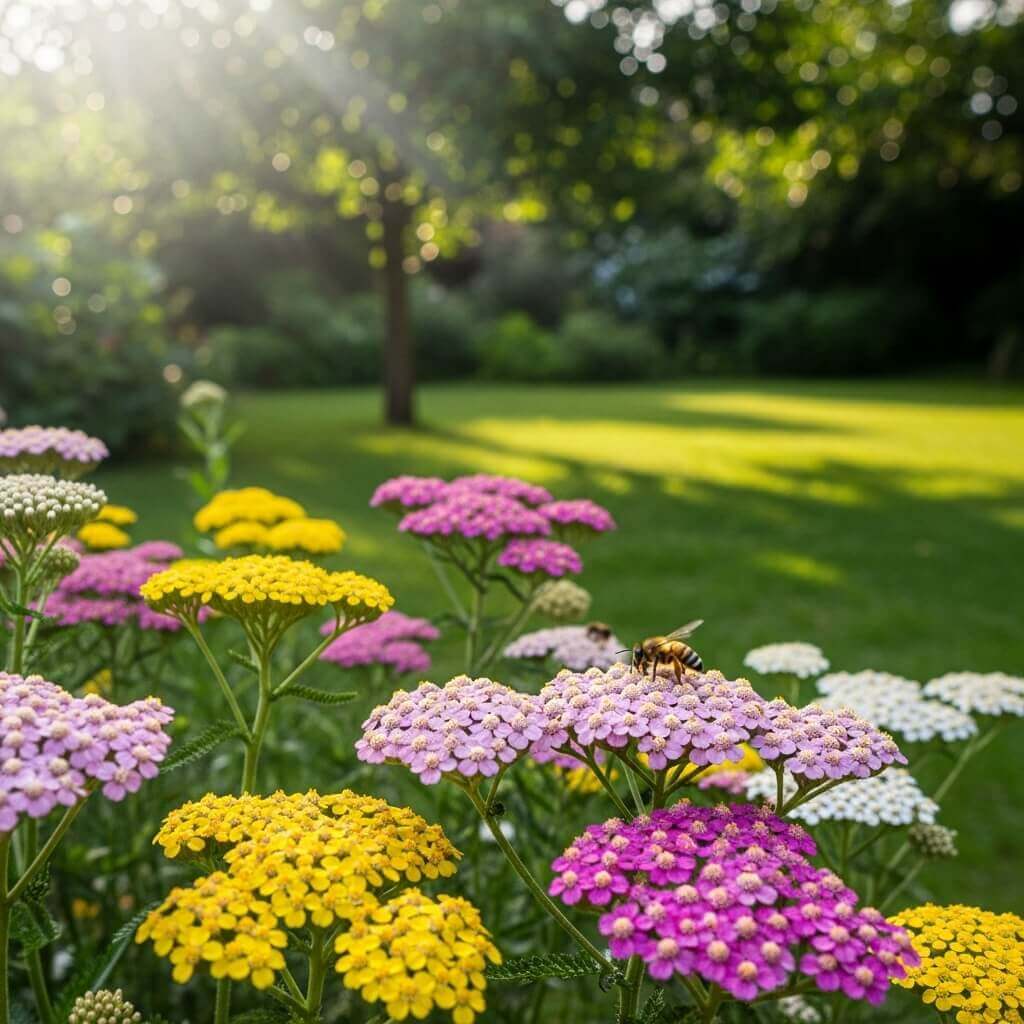
12. Marigolds – The Overachievers
They’re not just for deterring pests—they’re actually fantastic pollinator plants too!
Fast Facts:
- Bloom Season: Summer to frost
- Low maintenance: Yes
- Safe home for: Bees, hoverflies
Their sunny faces brighten up any flower bed.
🌼 Get heirloom marigold seeds on Amazon here.
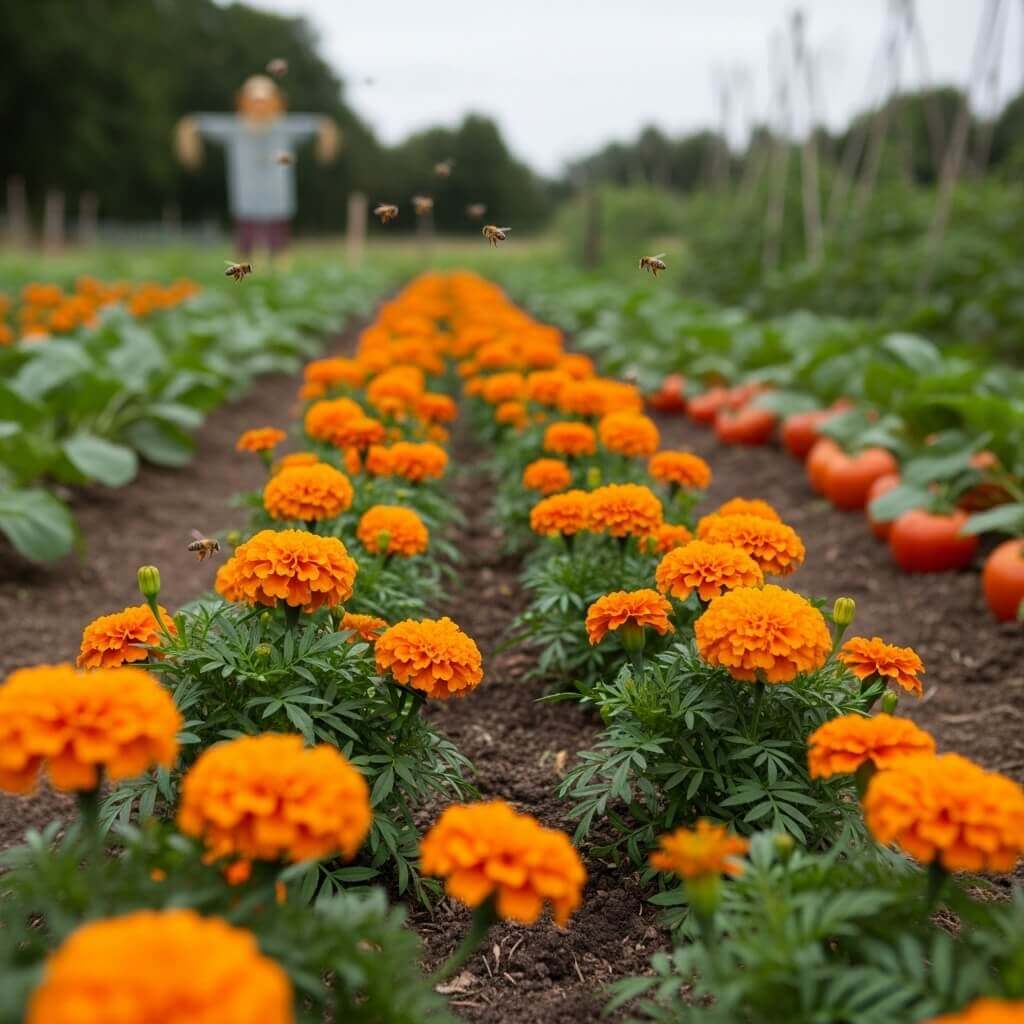
13. Phlox – The Fragrant Cloud
A flower so sweet-scented, even you might hover like a bee!
Highlights:
- Best Time to Plant: Early spring
- Blooms: Spring to fall
- Spacing: 12–24 inches
It’s like spraying your garden with floral perfume.
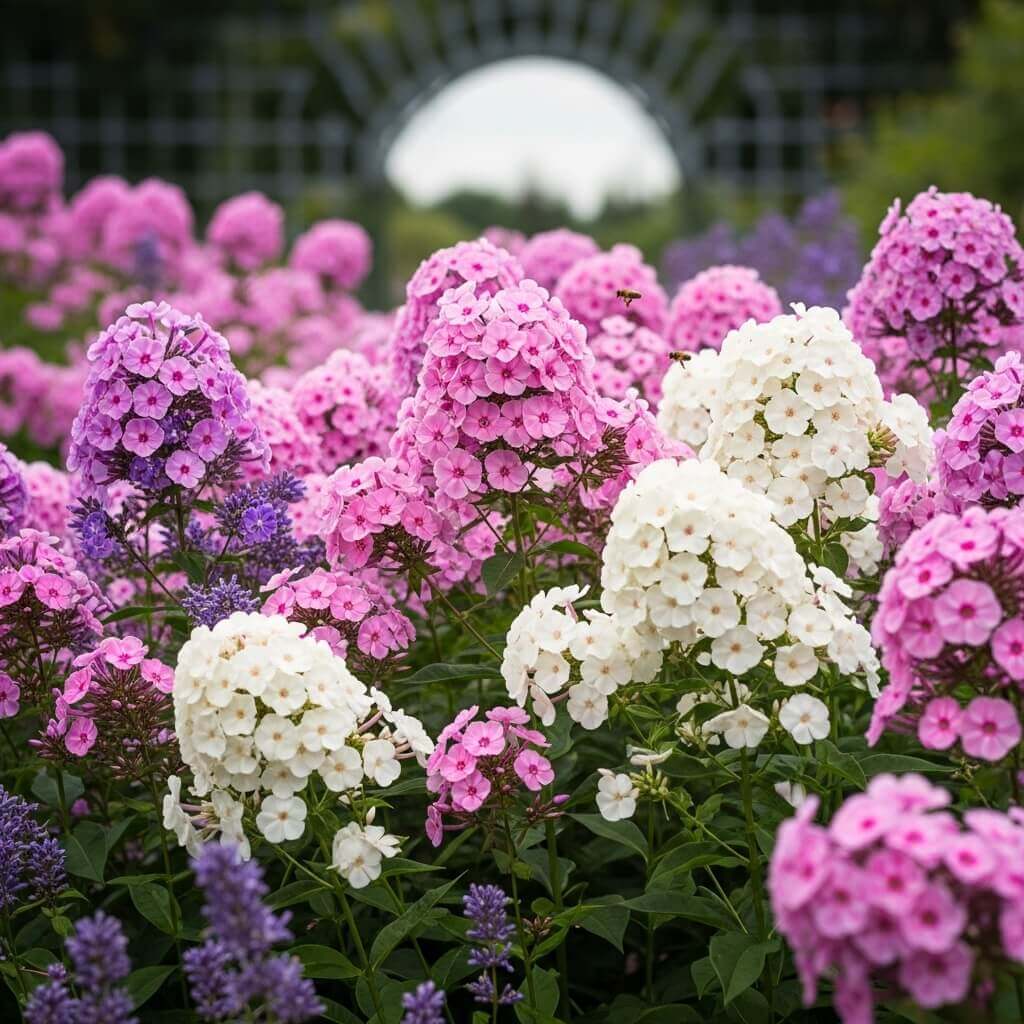
14. Milkweed – The Monarch Magnet
While bees enjoy milkweed, butterflies go bananas for it. Especially Monarchs.
Must-Know Details:
- Essential for: Butterfly habitats
- Toxic to pets: Keep it in a bee zone
- Colors: Pink, orange, white
It’s a must for any pollinator-friendly landscape.
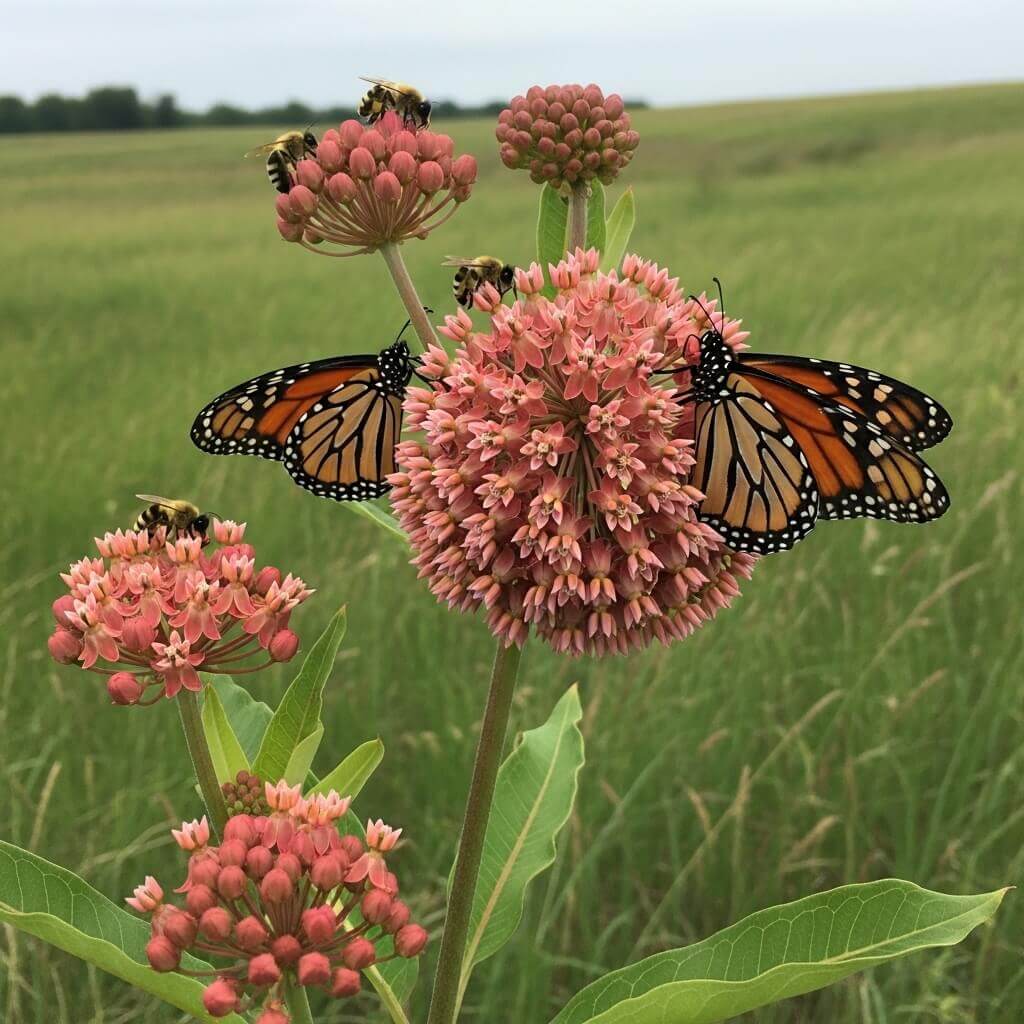
15. Salvia – The Humming Haven
If you hear buzzing near salvia, that’s just nature doing its thing.
Good To Know:
- Variants: Blue, red, purple
- Perfect for: Hot, dry spots
- Maintenance: Cut back to promote new blooms
Pair them with lavender for a dreamy purple patch.
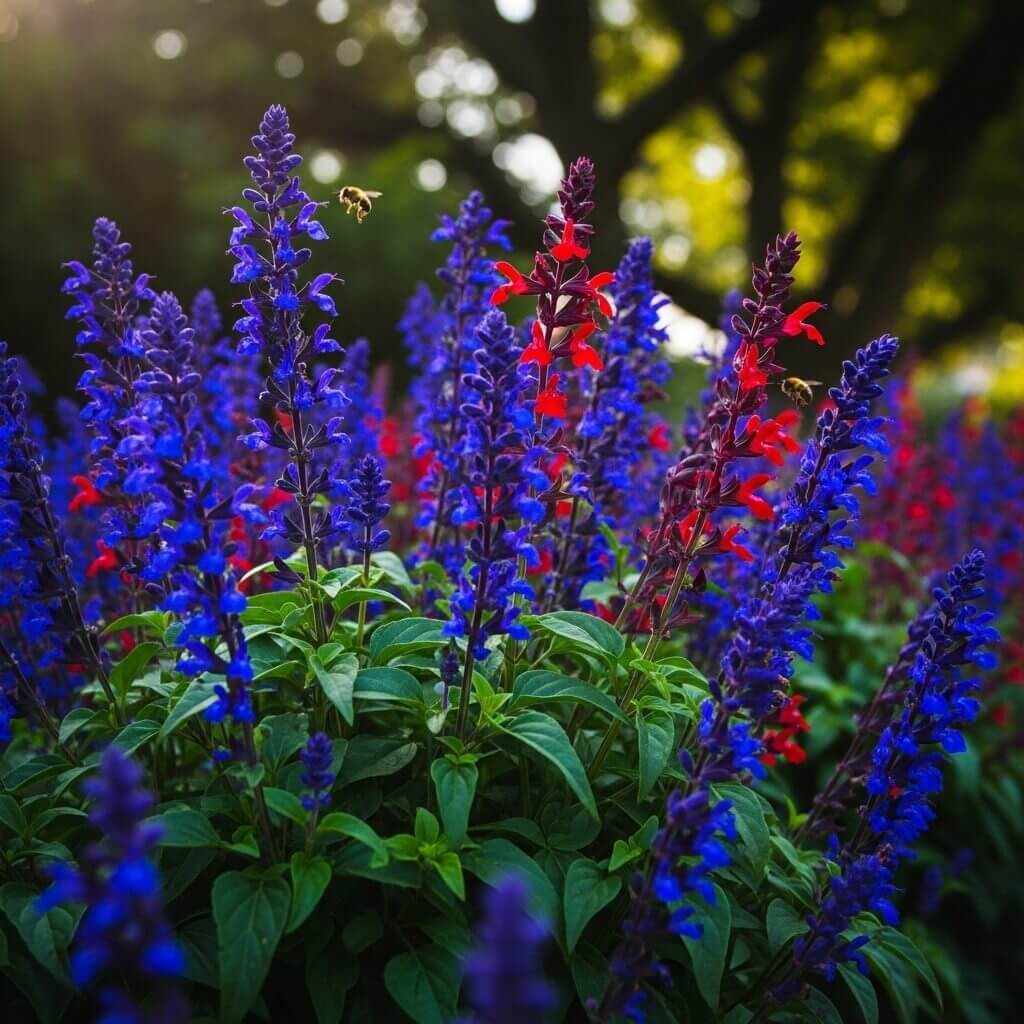
How to Keep Bees Happy All Year Round
Planting the right flowers is step one. But here’s how to turn your garden into a five-star bee habitat.
Tips:
- Avoid pesticides—opt for organic solutions
- Provide shallow water sources
- Use a variety of native plants for continuous blooms
You’ll not only help bee populations, but your garden will thrive.
Learn more about supporting pollinators from the Xerces Society for Invertebrate Conservation.
Want more color in your garden? Don’t miss our guide on Top 15 Red Flowers to Grow for a Gorgeous Garden.
